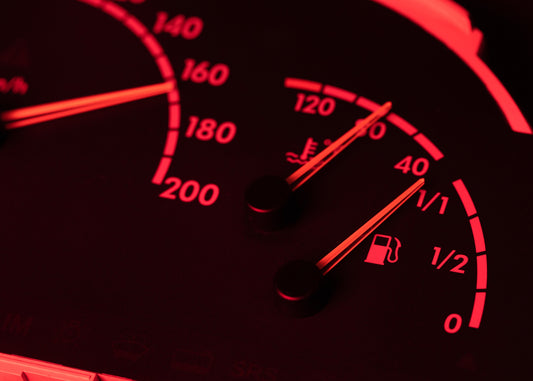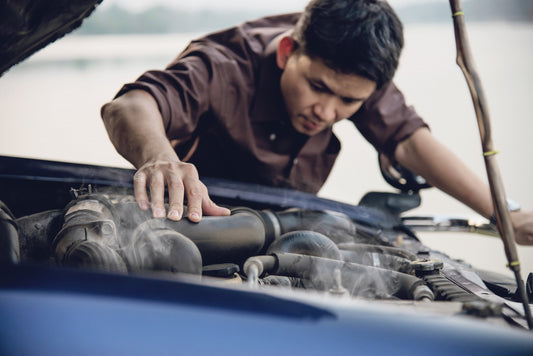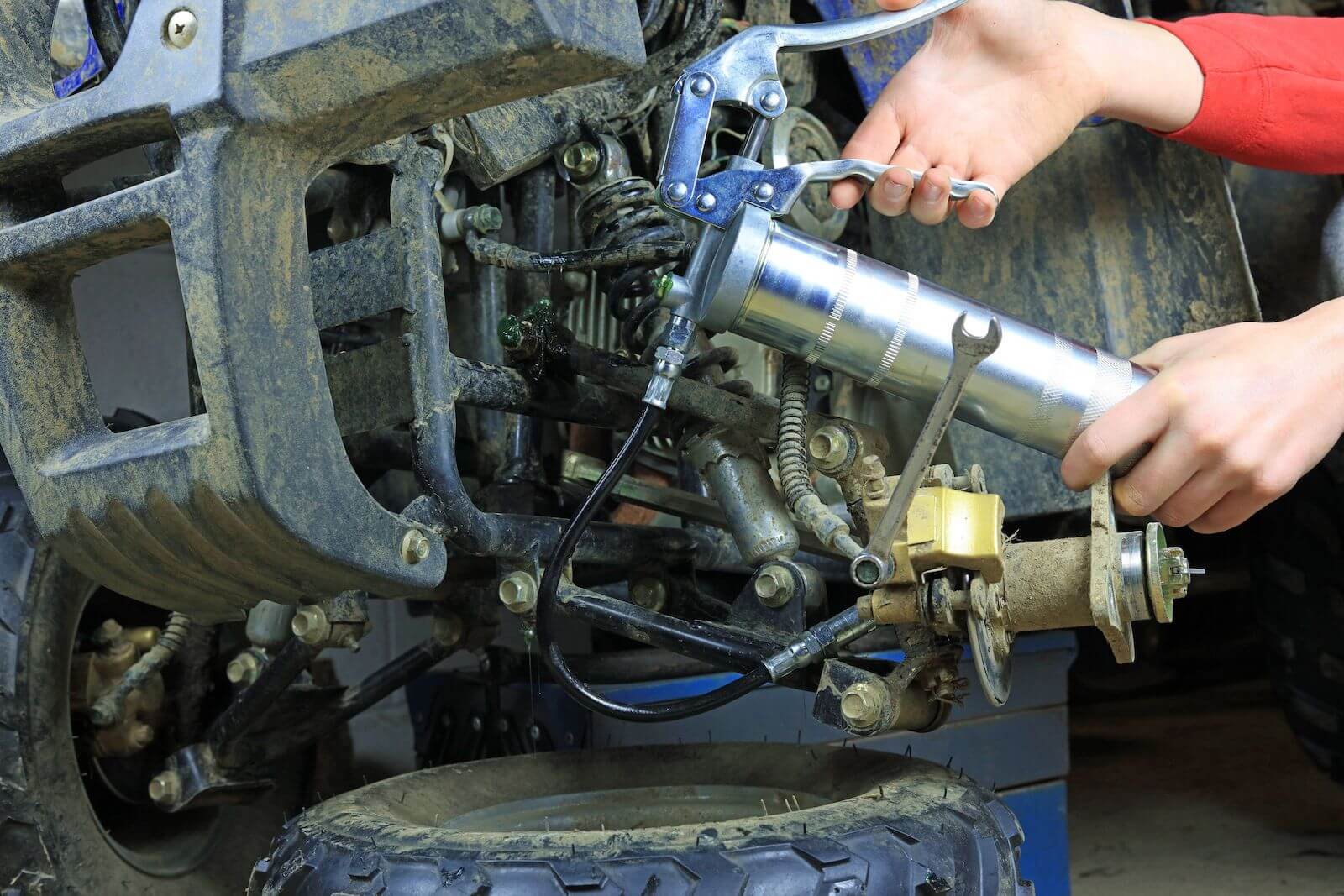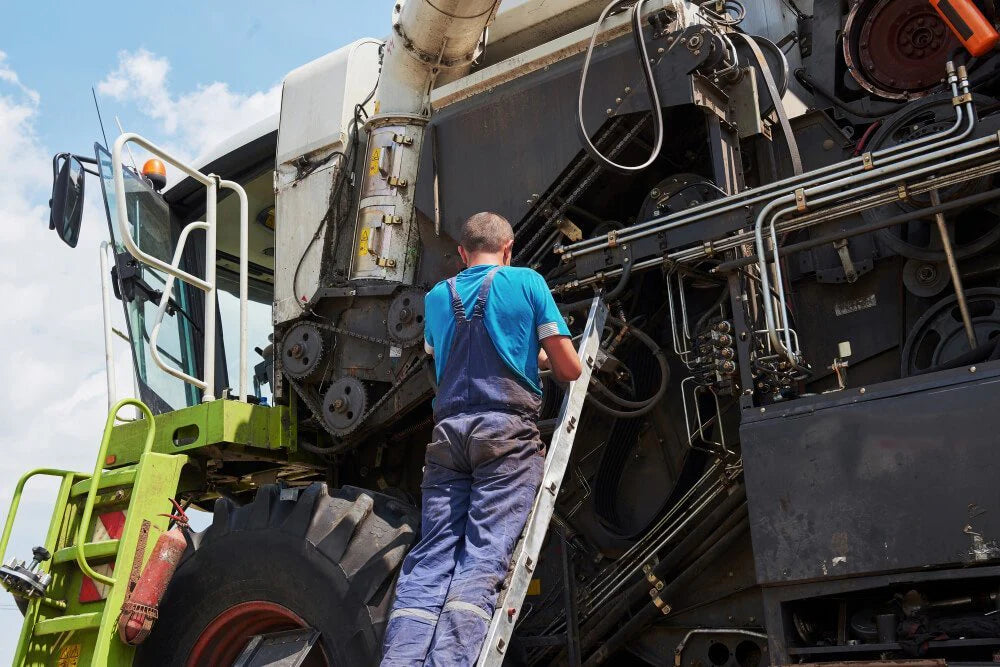A lush green lawn with perfect striping will make any homeowner proud and many a neighbor jealous, but do you know one of most important aspects of maintaining a perfect lawn is lawn mower maintenance? Dull blades, worn bearings, improper RPMs, and leaks can stress and ultimately destroy a once beautiful lawn. SO, lets tackle that all important question: How to Maintain a Lawn Mower?
We are going to tack a top-down approach and start with the engine.
- Check the engine oil. Many lawn mowers are now 4 stroke and require engine oil, check the dipstick to make sure the oil level is at the “FULL” line. Check out your owner’s manual to find out how often you should change the oil in your mower, consistent oil changes will keep your mower in tip top shapes for years to come.
- Know what fuel you are using. Fuel issues account for most performance issues with mowers, poor fuel quality or the wrong fuel will cause the engine to struggle and not maintain the desired RPM. Variations in RPM and a struggling engine will result in inconstant mowing and poor results. So make sure you are using the correct fuel, many manufacturers recommend using a low or no ethanol gasoline and will also recommend a fuel stabilizer like AirTec Octane FS1 to prevent the fuel from oxidizing. It is especially important to drain the fuel out for winter or stabilize it to make sure the mower will start come spring. THIS IS ESPECIALLY IMPORTANT WITH ETHANOL FUELS AS THEY CAN OXIDIZE AND DEGRADE RAPIDLY DURING STORAGE PERIODS.
- Check your blades and keep them sharp. Poor cut quality is often the result of dull blades, but what is the correct way to sharpen your lawn mower blades? There are a lot of videos and blogs available that claim to show the best blade sharpening techniques, but we would suggest learning from the professionals. Stop by an ACE Hardware or the dealer where you bought your lawn mower and ask them how to sharpen the blades for your mower, and if they will let you watch them sharpen your blades. The best way to learn is in person. Now, if you do not have any desire to sharpen the blades yourself, have the dealer stop out or check with your local ACE store to see if they do onsite blade sharpening. To further extend the life of your lawn mower blades make sure you are keeping the mower deck high enough and clear of sticks, rocks, and dirt. Preventative lawn mower maintenance can go along way in ensuring your blades and mower last a long time!
Is there a difference between push mower maintenance and riding mower maintenance?
Yes, riding lawn mowers are more complex machines and will require a little more attention than push mowers, however, do not worry, further maintenance is not too complicated.
- Check tire pressure. Most push mowers will have solid wheels; however, riding mowers will have air filled tires and the tire pressure should be checked regularly. If one tire is over or under inflated, it will affect how high the mower is cutting the lawn and can create uneven cutting levels from right to left. In addition, tires with lower or higher tire pressure make cause your mower to track to one side and not go straight. Tires with low inflation will also cause more damage to the lawn when turn whereas overinflated tires will reduce traction and increase tire spinning issues. SO be sure to check your owner’s manual to find out the correct tire pressure for your lawn mower!
-
How to Grease a riding Lawn Mower. The Lube-Shuttle® Homeowner Greasing kit makes greasing a riding lawn mower super easy. It comes with the right grease for a mower and a long enough hose to reach all the grease fittings. The grease or zerk fittings will be located on the steering components of the mowers, wheels, and the drive spindles for the mower blades. The location of the grease fittings should be easily identified in the owner’s manual along with the correct greasing interval (typically 10 hours).
- How much grease should I pump in each zerk fitting? Grease volume depending largely on the application, but there are a few things to remember that will greatly extend the lifespan of the bearings on your riding lawn mower.
- Seals on bearings keep dust out, do not over grease and damage the seal. The seal on a bearing is a protection synthetic gasket that helps hold the grease in the bearing while keeping the dirt and dust out. The goal of greasing is to add grease to the bearing without pressing out the seal. Once the seal is out of place the bearing is much more susceptible to damage from foreign material.
- What Grease should I use? Greases are designed for a specific use and the bearings on a lawnmower are equally designed for a specific type of lubricant so check out the owners of the mower and find out what grease you should be using. Most mowers will recommend a high temp lithium or lithium complex grease which can be readily found. Again we recommend the Lube-Shuttle® Homeowner Greasing Kit for people mowing their own lawns and the Lube-Shuttle® Peak Protection Kit for commercial mowing operations.
- How to use a grease gun. Many grease guns use a open ended cartridge that can be frustrating to use because they are hard to load, leak, and can get air gaps which stop them from working. For this reason, if you are unfamiliar with grease guns or want a grease gun that does not leak and will not give you problems check out Lube-Shuttle® thread in cartridges.
Maintaining a lawn mower should be an easy task when done regularly and is a lot cheaper than fixing or buying a new mower. Every time you mow your lawn get in the habit of looking over your lawn mower before and after your mow, this way, if something is not right, you will know right away.






